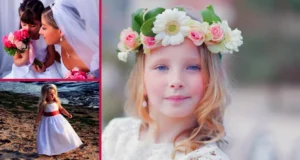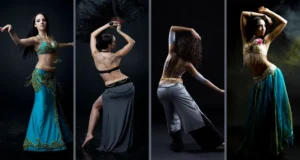Have you ever wondered about the vibrant fabrics flowing across India? The saree is more than just a simple cloth – it carries the proud traditions of a nation. Worn by women of all backgrounds, this versatile garment tells a story through its graceful drapes.
Beyond beauty, functional reasons make the saree a staple. Lightweight textures suit scorching season, loose pleats allowing airflow’s cool breeze. Form meets function, too – occasions from formal to festive find flexible fits. Regional styles show diverse roots yet unite all under one colorful cloth.
Deeper ties bind the saree to souls as well. Symbols of faith and femininity, these saris journey with life stages from rites to rituals. Communities come together in shared fabrics, heritage held by each pleating pride.
An identity so rich deserves exploring – just keep reading to unveil the empowering essence of India’s iconic attire!
Why do Indian women wear sarees?
Religious and Cultural Significance
Indian women wear the beautiful saree for very important reasons. The saree is more than just a piece of clothing – it holds deep religious and cultural significance.
The saree represents strength and power. It reminds us of powerful goddesses like Shakti and Parvati, who are seen as ideal Indian women. Wearing a saree makes Indian women feel proud of their culture and religion.
Certain sarees have special meanings, too. For example, Hindu brides wear bright red sarees on their wedding since red means love. During festivals like Navratri, women dress in nine vivid colors for the nine forms of Shakti. White sarees in Jain ceremonies show respect for non-violence.
Religious festivals are when sarees really shine. You’ll see beautiful bright sarees at parties like Vaisakhi and Diwali. Sikh women proudly show their cultural identity this way. The saree is a symbol of tradition that brings Indians together during celebrations.
No matter your background, all Indian women can take pride in this fabric. From young girls to experienced mothers, the saree is for everyone. Even famous actresses on television love dazzling in elegant sarees!
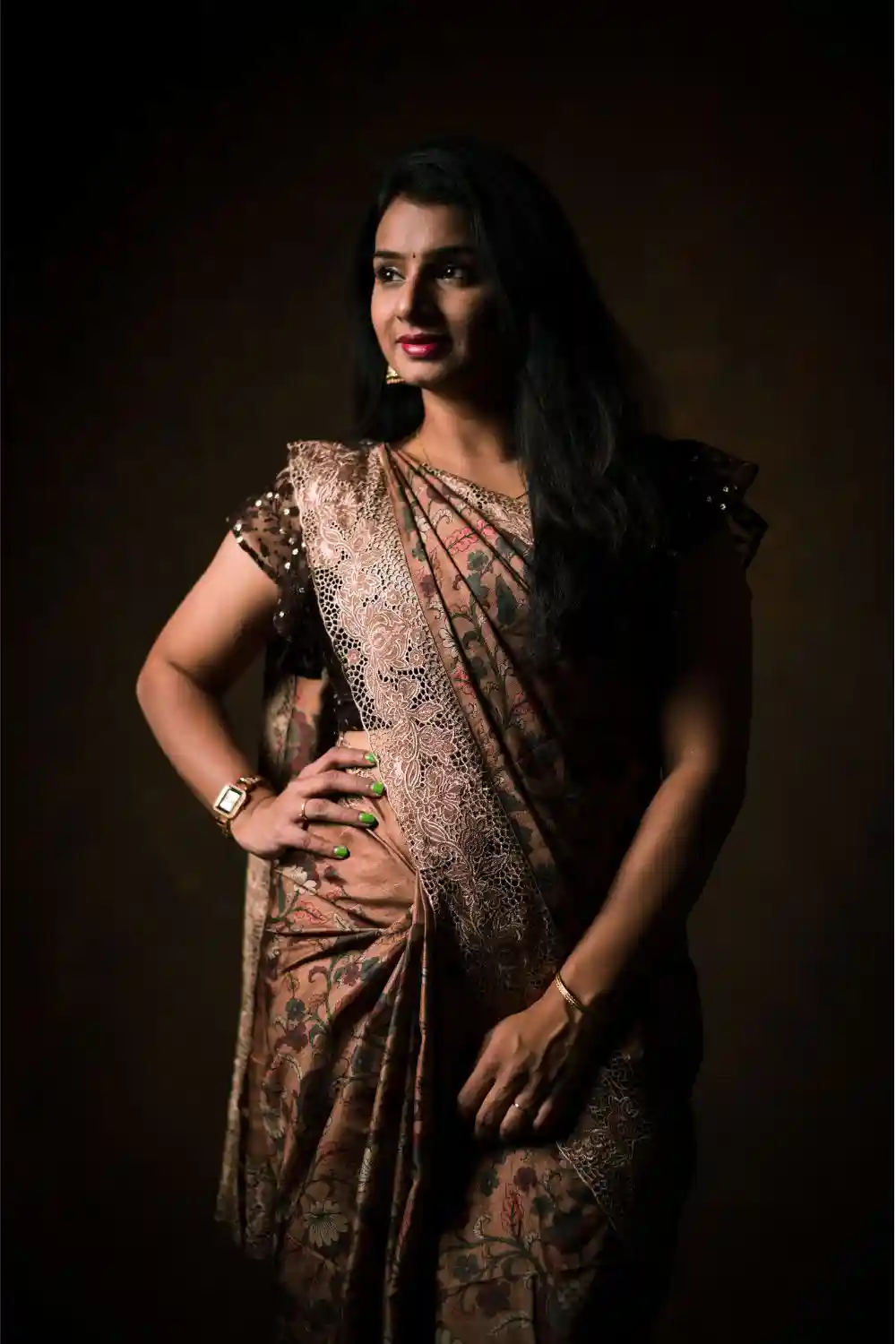
Symbol of Femininity and Grace
Have you seen how gracefully an Indian woman carries herself in a saree? The saree is more than just a piece of clothing. It enhances every woman’s natural beauty and makes her feel truly feminine.
A saree highlights all the right features. The flowing fabric shapes a lady’s body, accentuating her lovely curves. No matter what size or age, every woman looks stunning. Sarees come in so many textures, too – light silks that float are perfect for spring, and elegant chiffon for celebrations.
Did you know draping styles make each saree unique? A Nivi drape shows off a person’s figure so well. Others, like Gujarati, allow creative pleats. Accessories make the perfect finishing touch – jewels and flowers in the hair. An Indian beauty radiates in her saree.
Festivals and weddings bring out the most exquisite sarees. Can you imagine a bride dressed in a vibrant red silk saree? She must feel like the most graceful woman in the world. The saree spreads happiness and makes every girl and woman proud of their culture.
Regional Diversity and Cultural Expression
India is such a diverse land, with each area having its own unique qualities. This is clear when you see the special sarees women wear. Did you know some types, like Kanjeevaram sarees, come from Tamil Nadu? These delicate silk creations with intricate designs are treasured for marriages.
In the north, Banarasi sarees from Varanasi feature beautiful gold embroidery – making them perfect for prayers. Moving west, you see the vibrant patterns of Paithani sarees from Maharashtra. Their geometric motifs tell old folktales. Even climates affect sarees – Chanderi sarees from Madhya Pradesh use sheer fabric for the summer heat.
The colors and styles don’t stop! Gujarat gives us eye-catching Bandhani sarees tied with dye. Each type lets women feel pride in their roots while expressing themselves. No matter where she lives, an Indian lady can find a saree connecting her to neighbors and family.
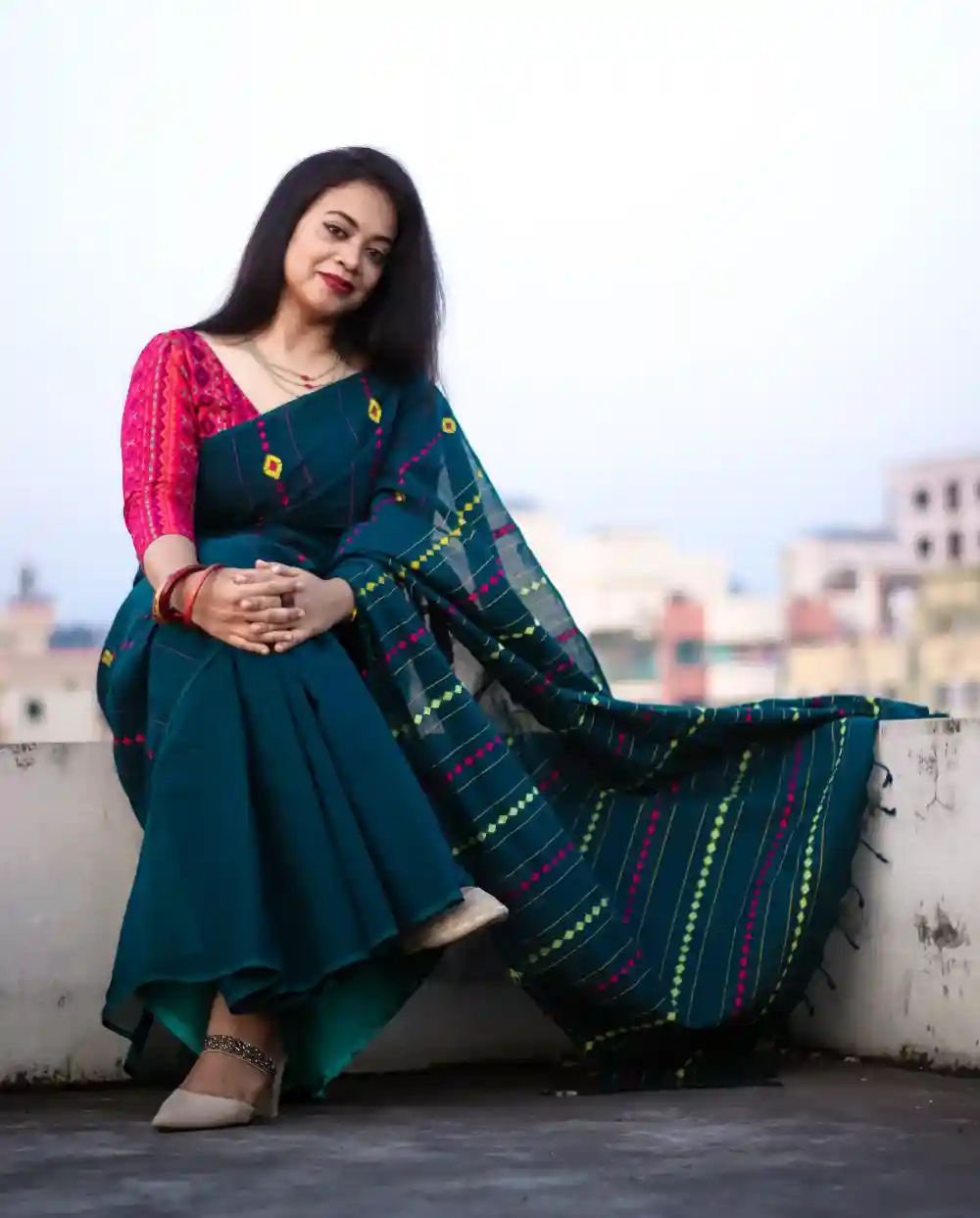
Social Status, Identity, and Tradition
Do you know an Indian woman’s saree can tell you so much about her? The material or style she chooses shows her place in the community. Rich fabrics in intricate patterns belong to higher classes. Even colors are important – some regions expect married ladies to wear red sarees with black borders.
Traditions also differ between areas. In Gujarat, women take pride in twisting their sarees in the unique Gujarati way. Jewelry finishes the look like people from different faiths or tribes. Through these visual cues, an Indian lady shares her identity without words.
Religious ceremonies and festivals especially showcase treasured customs. Seeing ladies in crimson for prayers, you feel the devotion. Navratri is colorful – sarees match each goddess the 9 days honor. Your outfit tells the tale of traditions your whole family values.
This is what makes the saree so beautiful – it connects you to history and community. No matter your personal story, this six-yard symbol lets you celebrate your roots. I hope learning these details helped you appreciate an Indian woman’s pride in her vibrant culture.
Versatility and Comfort
Have you felt the lightness of a saree? Unlike other clothes, this six-yard miracle is so flexible. An Indian woman can dress it up beautifully for weddings or tone it down for homemade cooking. Silk turns into casual cotton – all with just a few folds.
Versatility means the saree goes anywhere, too. From work meetings to family get-togethers, it adds grace. Did you know different fabrics suit each season? Floaty silks stay cool in summer, while cotton hugs in winter. No matter the change in weather, a saree keeps every woman comfortable.
Mostly, I love how freely it lets you move! Those loose pleats allow full circulation so the heat never overwhelms. Whether farm work or house chores, an Indian lady stays light on her feet. All that airflow also makes a saree perfect for India’s varied climate zones.
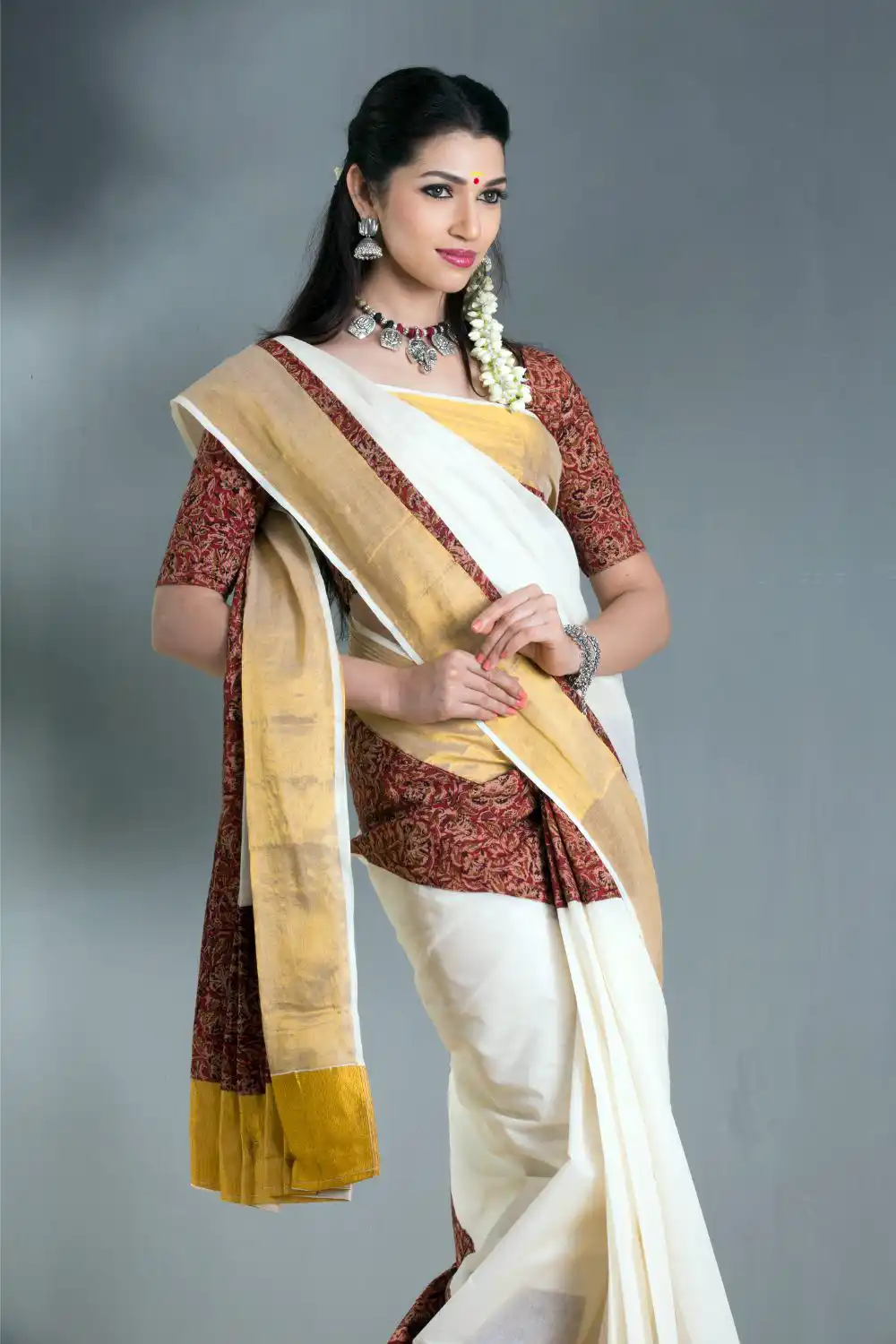
Connection to Heritage and Pride in Dharma
When an Indian woman drapes a saree, she feels truly proud of her roots. This vibrant fabric connects her to a story reaching back centuries – she honors the traditions that make her who she is today.
Some say a saree is just clothing, but it represents so much more. Its patterns showcase our faith – noble symbols like the lotus remind us of Hindu virtues. Every fold is infused with the essence of dharma, guiding us to walk rightly.
During festive seasons especially, you see how brightly colors celebrate our unique culture. Diwali and Durga Puja burst with joy as families come together, identifying as one people. Even marriages and blessings of newborns showcase heritage – a joyous legacy our mothers preserve.
In a changing world, it warms my heart to see Indian values passed down with such care. When a woman dresses in her saree, she honors past generations who kept our community vibrant. She expresses her identity without fear, connecting future kids to roots of strength.
That is the true gift of this six-yard symbol – pride in all that came before us and faith in all that is yet to be.
Symbol of National Pride and Deity
Have you seen the smile of pride an Indian woman wears with her saree? This fabric is ours alone, telling the story of our vibrant culture to the world. No other nation shares this heritage.
Their saree represents the skills of artisans who weave magic with threads. Their creations showcase dedication to tradition through intricate patterns. Even foreigners appreciate the craftsmanship flowing from these hands.
But most of all, a saree shows devotion to Mother India herself. You see it on Independence Day as ladies celebrate freedom in colorful silk. Bollywood stars share this pride abroad, too. Similarly, folding one in prayer connects a woman to gods, like seeking Lakshmi’s grace in red.
This bond of faith runs deep. Temple visits are more meaningful and draped as tradition intends. Festivals, too, honor age-old rituals – Navratri shines with each goddess-inspired hue. Through these ties, a saree lets a lady carry her nation’s soul each day.
Rite of Passage and Coming-of-Age
Have you witnessed an Indian daughter’s special Ritu Kala Samskara? For a young lady, this event celebrates her journey to adulthood. What a joyous change it must be!
One thing makes the day even more meaningful – her choice to drape a saree. This vibrant fabric carries generations of tradition, marking her transition into womanhood. The colors and styles connect her to the community, just as mothers before.
But it isn’t just appearance. A saree’s folds hold deeper roles, too. They symbolize taking on a lady’s duties, from caregiving to creative talents. New jewelry underlines this responsibility, complete with blessings for the future.
After the ceremony, a saree increasingly joins religious events. Weddings where the bride shines, baby showers – each honors stages of life. Our faith and culture flow as one through these rites of passage.
Wouldn’t you agree what a gift it is, learning from precious elders in this way? A saree lets each new daughter celebrate her journey, proudly following in familial footsteps. Its comforts guide independent growth, respecting roots laid long ago.

Summary
The saree is much more than just a piece of clothing for Indian women. It represents tradition, culture, and womanhood. This versatile garment tells the story of India through its diverse styles, vibrant colors, and graceful draping.
Sarees hold deep religious and cultural significance. Certain fabrics are worn to honor goddesses or during festivities. They unite communities and express regional identities. The saree also signifies important life events, from coming-of-age ceremonies to marriages.
On a practical level, sarees are lightweight and allow airflow, making them comfortable in India’s warm climate. Their flexible styling suits formal or casual settings. Regional varieties show local craftsmanship through unique patterns, textures, and hues.
An Indian woman’s saree reveals her identity, status, and traditions. Color and material relay class or marital status, while styles convey communities. Religious ceremonies showcase revered customs through saree traditions. They connect ladies to history and bring families together through shared fabrics.
The saree enhances every woman’s natural beauty and femininity through its shaping drapes. It lets ladies feel proud and graceful no matter their size or age. Festivals and weddings bring out the most dazzling silks and colors. Creative pleating allows self-expression within traditional roles.
Sarees spread joy and celebrate vibrant cultures. Indian women find pride in wearing this iconic outfit, which represents their strong roots and faith and brings inner comfort through shared heritages.
From celebrating independence to important milestones, a saree lets ladies honor generations of mothers who preserved their traditions. Its story of diversity, identity, and womanhood inspires all.
FAQ
What is the spiritual meaning of a saree?
The spiritual meaning of a saree is that it represents qualities like femininity, fertility, purity, and devotion to the Hindu faith. For many Indian women, the saree signifies their connection to important Hindu concepts of Shakti and mother goddesses. It is seen as a sacred cloth honoring traditions from religious festivals to depictions of goddesses. Wearing a saree allows women to express their spirituality through its symbolic folds.
Why are saris revealing?
The sari can appear revealing depending on factors like its drape, the blouse worn, and the fabric’s transparency. Specifically:
– Some draping styles like Nivi expose the midriff area.
– Clinging or sheer fabrics allow the skin to show through.
– Certain blouse designs like tube tops leave the midsection bare.
However, saris don’t necessarily aim to reveal the body primarily. It depends on how the woman styles it based on individual comfort. Less revealing options involve opaque fabrics, full-coverage drapes, and modest blouses. Personal sensibilities shape each sari’s modesty along with cultural norms evolving over time.
Who introduced the saree in India?
The saree cannot be said to have been introduced by any single individual, as it evolved organically over many centuries of Indian history. Some evidence suggests unstitched garments worn as early as the Indus Valley Civilization around 2800 BCE may have influenced the saree’s development. Since then, regional cultures and changing traditions have continued shaping the versatile styles worn today across India as a treasured part of the nation’s cultural heritage.
What percentage of women wear saree in India?
At least 71% of households in India report purchasing sarees, suggesting a significant majority of women in the country wear them on some occasions. However, the percentage of women who wear sarees regularly is likely lower. Factors like age, location, and socioeconomic status also impact saree usage. While sarees remain deeply ingrained in Indian traditions, their popularity varies depending on individual circumstances. So precise estimates remain difficult, but surveys indicate well over 70% of Indian households include sarees among women’s clothing options at some point each year.
Is the saree a Hindu dress?
While the saree holds deep significance in Hinduism and is commonly associated with Hindu culture, it is not exclusively a Hindu dress. Sarees are embraced across different religious communities in India, including by Hindu, Muslim, Christian, Sikh, Jain, Parsi, and Buddhist women. However, the saree does have special importance for Hindu women, as seen in its depictions of goddesses and worn during ceremonies and festivals, representing purity, modesty, and grace. It remains an integral part of Indian traditions, identity, and womanhood overall.


